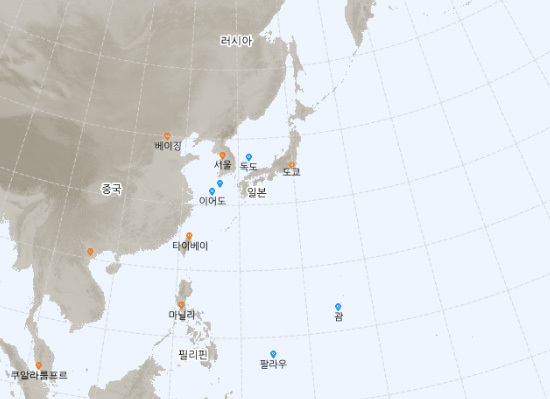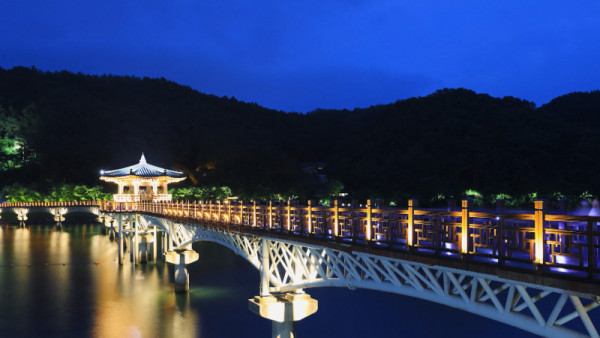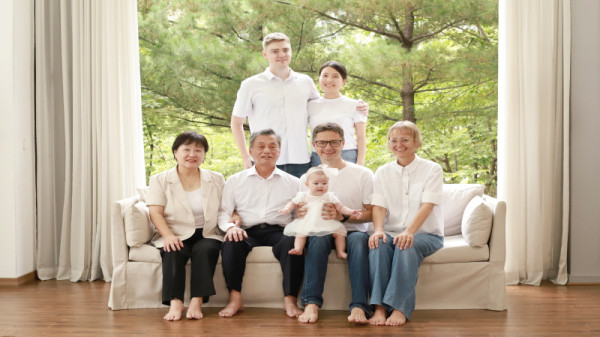![[SBS Good Partner] ‘New Start’ Who is the first client that Jang Nara faces?](https://kroamer.com/upload/trending/thumb-T9B1726187910749_600x2185.jpg)
The New Year's Day typhoon, the Meteorological Agency yet? ... How do you create the biggest natural disaster typhoon that humans have?
2019-09-25 14:11:10

Netizens are paying attention to the possibility of late fall typhoons near the Korean Peninsula during the New Year's Day.
According to private weather specialists Kweather and Windy.com, the typhoon is expected to pass south of Kyushu in Japan on October 2, the day before the opening.
After the landing on Tokyo Day on the 3rd of the day, it is expected to rise by the wind blowing toward Korea.
The exact route and size of the typhoon has not been determined, and the Meteorological Agency has not yet announced it.
The 13th typhoon 'Lingling' and the 17th typhoon 'Tappa' hit the Korean peninsula this month, and six typhoons affected the Korean peninsula this year.
On the other hand, typhoons are the natural disasters that cause the most damage to human life and property among the natural disasters that humans suffer from direct damage.
Typhoon is a type of tropical cyclone. Tropical cyclone occurs in various parts of the earth, and it is called differently depending on the region.
'Typhoon' occurs in western North Pacific, 'hurricane' occurs in eastern North Pacific, North Atlantic and Caribbean, and 'cyclone' occurs in Bengal Bay and Indian Ocean.
According to the intensity, it is classified as tropical disturbance, tropical storm, and typhoon. The intensity is mainly determined by the maximum wind speed.
The typhoon class is the lowest atmospheric pressure at the center, the mean wind speed or wind gust strength for one to three or five minutes, the wind direction, the precipitation and precipitation intensity, the radius of the 87 km / h or 118 km / h wind speed, or 1,000 mb (millibars).
This is determined by the radius to the isobar, the point of occurrence and the characteristics of the course.
The typhoon rotates counterclockwise in the northern hemisphere and clockwise in the southern hemisphere, forming a spiral cyclone towards the center of the storm.
The air pressure decreases toward the center and wind speed, temperature, and humidity increase, but suddenly the wind speed decreases, and the central snow has a unique structure that shows a breeze without wind or wind.
Such a typhoon is not easily seen because only a part of the tropical disturbance grows and is formed.
The number of typhoons that occur each year varies from 30 to 100, with one quarter occurring in Southeast Asia, one seventh in the Caribbean, and one tenth in the Southwest Pacific and Australia.
The number of typhoons affecting Korea is 3.1 annually.
On average, about two typhoons affect summer and about one typhoon in autumn.
Tropical cyclone is one of the tropical cyclones one step weaker than the typhoon.
The cyclone that occurs at tropical seas between 8 and 25 ° north latitude is called tropical cyclone.
The typhoon we commonly know is the tropical cyclone up to 17m / sec above the center and is accompanied by strong storms.
Water vapor, which evaporates from the warm tropical seas, gathers and rises, supplying a tremendous amount of energy to the atmosphere.
This developed typhoon is accompanied by strong winds of 120 to 200 kilometers per hour and heavy rainfall, which causes wind and water damage.
The name of the typhoon began in 1953 when Australian forecasters gave their politicians a nickname.
After World War II, the U.S. Air Force and Navy officially began naming typhoons, using names of women such as their wives and lovers.
However, the issue of women's discrimination has been raised, and since 1979, men's and women's names were alternately used.
The name of the typhoon, which has been in existence since 2000, is divided into five sets of 140 unique languages submitted by 10 member countries of the typhoon committee.
Beginning in January 2000, the 32nd Typhoon General Assembly will change the name of the typhoon from Western to unique names in 14 Asian countries in order to increase the attention of typhoons and strengthen the boundaries of typhoons.
As a result, 10 typhoons were submitted from each of the 14 member states.
The 140 names were divided into five groups, each consisting of 28 groups.
It is used in order from 1 to 5 sets.
After using all 140, use from 1 again.
Because there are about 30 typhoons per year, it takes four to five years to use up the full name.
In Korea, typhoon names are mainly defined in flora and fauna that are easy to pronounce and easy to pronounce.
This is because protests are expected when typhoon names are associated with specific regions, groups or individuals.
Member of Typhoon Committee: Korea, Cambodia, China, North Korea, Hong Kong, Japan, Laos, Macau, Malaysia, Philippines, Singapore, Thailand, United States, Vietnam

![[SBS The Story of That Day] A good son sentenced to 100 years in prison](https://kroamer.com/upload/trending/thumb-loI1726126533731_600x750.jpg)



![[SBS Judge from Hell] 4th teaser, Park Shin-hye](https://kroamer.com/upload/trending/thumb-1oA1726190224411_600x780.jpg)


